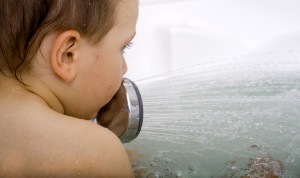
With autism rates soaring at an alarming rate in the United States, medical researchers are looking for answers as to what causes this mysterious condition, both on an anatomical and physiologic level.
A study published online in late March, 2014 in the New England Journal of Medicine is adding weight to scientific belief that autism may start in the fetal or even the embryonic stage of child development.
Researchers from the University of California at San Diego School of Medicine, and the Allen Institute for Brain Science in Seattle, WA, examined brain tissue from 22 children who had died; half of the children had autism, and half did not.
Tissue samples from the cerebral cortex were taken, from an area at the top of the head involved in learning and memory. This area has six distinct layers of cells.
In a normal brain, each layer is made up of specifically coded cells, different from the cells in the other five layers. But in the brain tissue of children who had had autism, researchers found ‘patches’ of cortex in the different layers that were missing the distinctive cells that corresponded to a given layer. Instead, the research team found patches of disorganized, mixed cells, making the layers in those sections more indistinct from one another. These disorganized patches were present in 10 of the 11 autistic children’s brains, even though the severity of their autistic symptoms had varied.
Eric Courchesne, author of the report and director of the UCSD Autism Center of Excellence, stated that the fact that these irregular patches could occur in different numbers and in different sections of the cortex could explain why symptoms of autism can vary so much from child to child. He added that the fact that only portions of the brain may be affected could explain why children are able to improve when they receive treatment, especially if therapy starts at an early age: a young child’s brain may be able to ‘re-wire’ around trouble spots, to compensate.
Autism symptoms can range from severe, such as when children can speak little or not at all, and repeat motor behaviors like rocking, or they can be milder, as in children who have some difficulty communicating and reading others’ facial expressions.
The latest figures from the Centers for Disease Control and Prevention estimate that 1 in 68 American children now has an ‘autism spectrum disorder’ — up from 1 in 88 only two years ago.
Studies continue being done in an effort to pinpoint causes. So far, many health experts agree that environmental exposure to harmful agents, including pollutants, may play a role in the development of autism. Mercury used as a preservative in childhood vaccines is also suspected by a lot of parents to possibly be a factor.
Some children also seem to have a genetic susceptibility to developing the disorder; that has led researchers to conclude that autism is the result of genes at interplay with environmental factors. (In the end, ‘genes’ may simply get back to parental exposure to harmful agents.)
By Jamell Andrews NP, PA